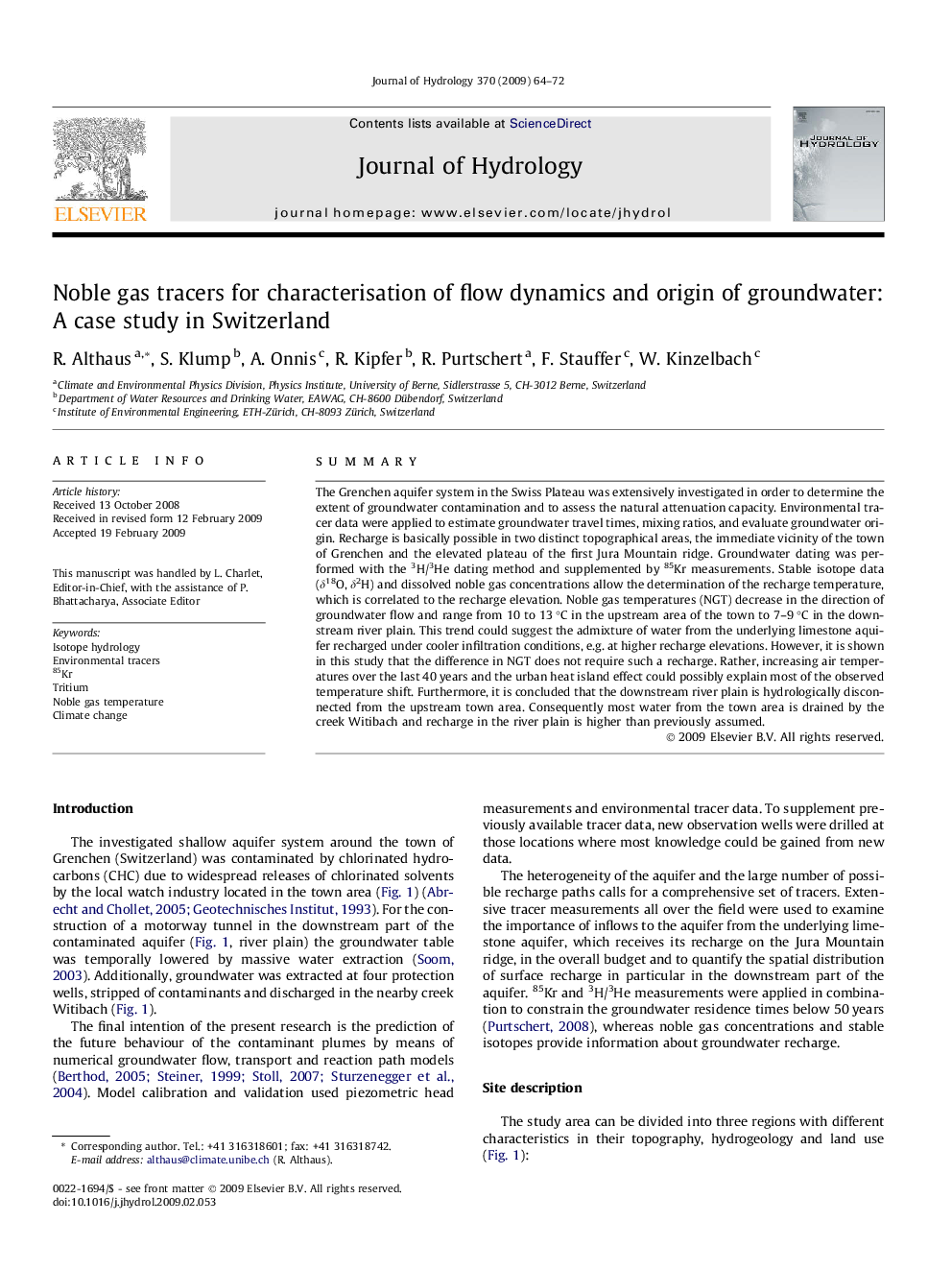| Article ID | Journal | Published Year | Pages | File Type |
|---|---|---|---|---|
| 4578884 | Journal of Hydrology | 2009 | 9 Pages |
SummaryThe Grenchen aquifer system in the Swiss Plateau was extensively investigated in order to determine the extent of groundwater contamination and to assess the natural attenuation capacity. Environmental tracer data were applied to estimate groundwater travel times, mixing ratios, and evaluate groundwater origin. Recharge is basically possible in two distinct topographical areas, the immediate vicinity of the town of Grenchen and the elevated plateau of the first Jura Mountain ridge. Groundwater dating was performed with the 3H/3He dating method and supplemented by 85Kr measurements. Stable isotope data (δ18O, δ2H) and dissolved noble gas concentrations allow the determination of the recharge temperature, which is correlated to the recharge elevation. Noble gas temperatures (NGT) decrease in the direction of groundwater flow and range from 10 to 13 °C in the upstream area of the town to 7–9 °C in the downstream river plain. This trend could suggest the admixture of water from the underlying limestone aquifer recharged under cooler infiltration conditions, e.g. at higher recharge elevations. However, it is shown in this study that the difference in NGT does not require such a recharge. Rather, increasing air temperatures over the last 40 years and the urban heat island effect could possibly explain most of the observed temperature shift. Furthermore, it is concluded that the downstream river plain is hydrologically disconnected from the upstream town area. Consequently most water from the town area is drained by the creek Witibach and recharge in the river plain is higher than previously assumed.
